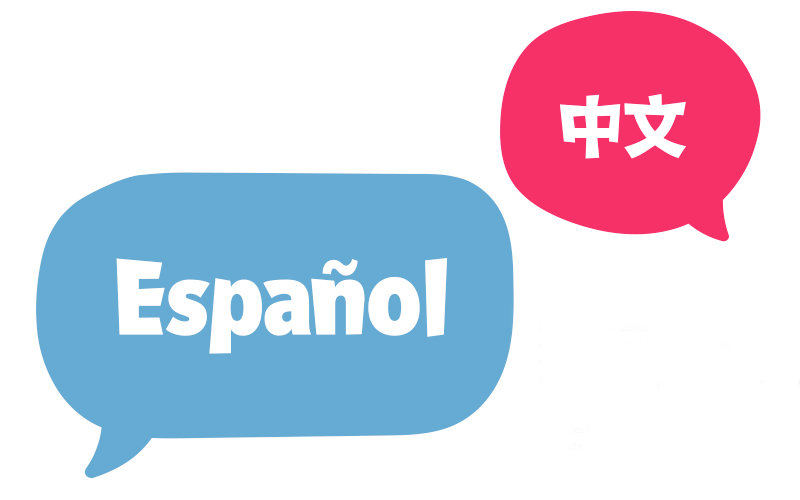
High school teacher Lizzette Barrios-Gracián is all too familiar with the struggles of children dealing with dueling cultures and languages. At age 7, she immigrated to the United States from Guadalajara, Mexico, and didn’t speak English.
She started her American education as an English learner. Growing up in her new, monolingual society, she lost her Spanish almost completely.
“With the loss of the language comes the loss of culture. It was a long road to regain both,” says the alumna.
Barrios-Gracián earned her B.A. in English and completed the single-subject credential program at Cal State Long Beach. At CSUF, she completed coursework to obtain her bilingual authorization in Spanish in 2015. She also took advanced coursework in teaching world languages-Spanish and social science at CSUF to add to her existing single subject credential.
Today, she teaches 10th-grade world history as a dual-immersion course, a bilingual journalism class and Spanish for Spanish-speakers at Anaheim High School.
“Bilingualism breaks barriers in communication and allows for an understanding of cultures. It is a disservice to our students to keep them monolingual,” she says. “They will not be able to compete in a global community.”
Dual-language immersion is a model of bilingual education in which students learn two languages simultaneously, such as Spanish and English or Korean and English, explains Fernando Rodríguez-Valls, associate professor of secondary education and the College of Education’s bilingual authorization program coordinator.
“In the past, bilingual education encompassed models where a student’s mother tongue was only used as a support when learning English,” he explains. “The outcome of this model, in most cases, did not produce a bilingual student. It created monolingual students who progressively lost their mother tongue. Nowadays, dual immersion is a model where the final outcome is a biliterate student.”
In grades pre-K to 12, students in dual-immersion programs learn course content in two languages, in both their native language — the language spoken in the home — as well as in English, their new language. Dual immersion fosters and educates biliterate, multicultural and global students, Rodríguez-Valls points out.
In California, there are an estimated 1.3 million emergent bilingual students, and roughly 2.6 million students who speak a language other than English, according to the California Department of Education. With 14 school districts in Orange County implementing dual-immersion programs, there’s a growing need for bilingual teachers. Cal State Fullerton’s bilingual authorization program equips teacher candidates with the skills, including the most current and relevant curriculum and instructional materials, to lead dual-immersion classrooms.
Last summer, 75 CSUF teacher candidates completed the bilingual authorization program: 57 in Spanish and 18 in Korean. The university has also developed a bilingual authorization program in Vietnamese, as well as teaching credential pathways for Vietnamese, Korean, Mandarin and Spanish.
“We are becoming a leading force across the state and nationwide to prepare teachers for bilingual programs,” notes Rodríguez-Valls. This success, he adds, is the outcome of a macro approach supported by Lisa Kirtman, dean of the College of Education.
“Through dual-immersion programs, students do not have to stop speaking their mother tongue in order to master English, and most importantly, do not have to lose their identity,” adds Rodríguez-Valls, a native of Spain who wasn’t allowed to speak his native language, Catalan, in school in Barcelona. “Learning multiple languages nurtures higher-level thinking, critical problem-solving and inclusiveness beyond childhood.
“Biliteracy can only be achieved when, and if, students learn language throughout all subject areas. The latter occurs in dual-immersion classrooms. Students learn to read, interpret and transform the world with biliterate and critical eyes.”
Barrios-Gracián credits faculty mentors like Rodríguez-Valls for preparing her to teach in a dual-language classroom setting.
“Cal State Fullerton was essential in my preparation because not only did I learn the theory behind dual immersion, but how to apply it in the classroom,” she says. “Dr. Rodríguez-Valls is still my mentor, and a source I reach out to in order to keep my teaching practices current.”
Fostering and encouraging dual-immersion teaching is critical today because of the growing number of student immigrants from all over the world, the educators say.
“All of us, in different degrees, are a mixture of languages, cultures and identities,” concludes Rodríguez-Valls. “Two or more languages will always be better than one. Multitude overpowers solitude. Community embodies individuality. And, multilingualism enhances monolingualism.”